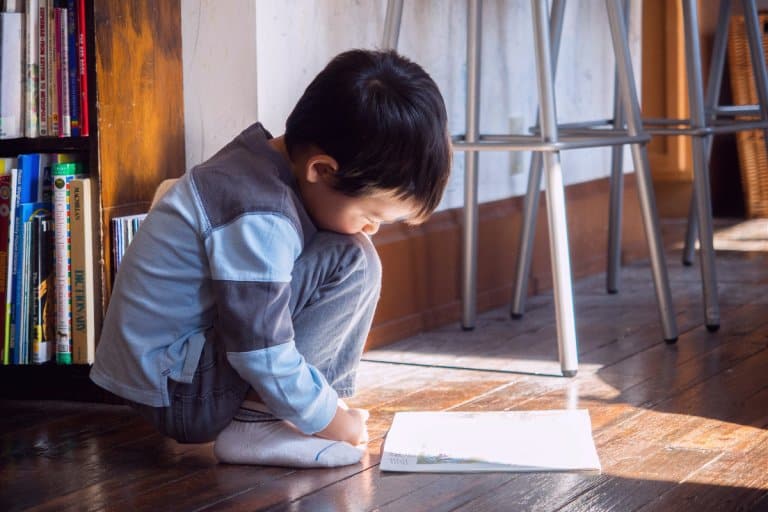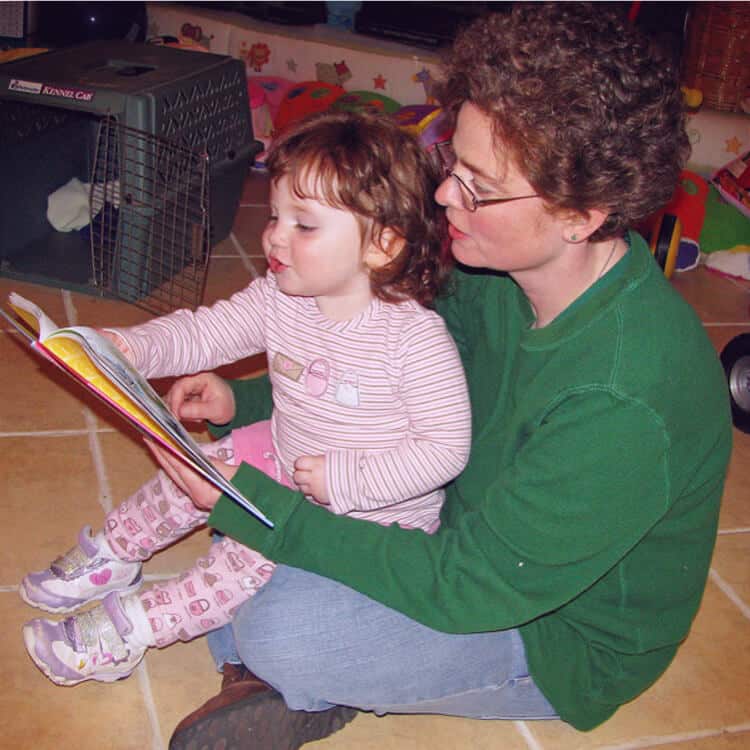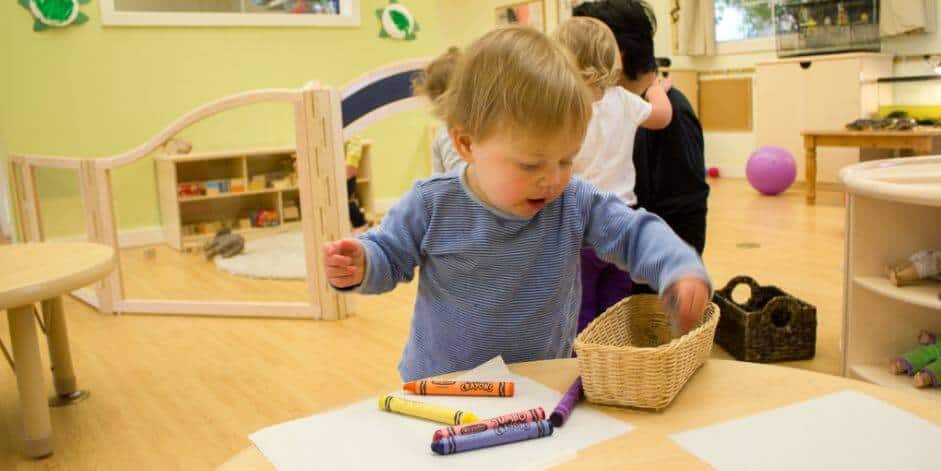Early Literacy 101: A Beginner’s Guide to Raising an Early Reader

Have you seen that viral video going around of the 19-month-old who can already read basic words and count to 50? I have, and honestly, it freaked me out a little bit. Watch it if you dare here.
Page Navigation
As an early literacy advocate and mother to a one-year-old little girl, I make a point to read with my daughter for at least 10 minutes every day. While reading together plays a significant role in early literacy, there are other concepts to practice as well.
The Five Practices of Early Literacy
According to Every Child Ready to Read (ECRR), it is important to use the five practices (talk, sing, read, write and play) if you want to successfully practice early literacy with your child.
ECRR is an education program that prepares parents for their important role as their child's first teacher and teaches them “best practices” for early literacy. ECRR’s kit comes with a price tag, and I suggest that parents should just take a trip or two to their local library. Why?
Most public libraries use ECRR’s program or have a similar program of their own. Additionally, librarians are trained in early literacy and can offer a wealth of information for free. So, if you don’t want (or have the means) to own a personal copy of the ECRR toolkit, you can get the same vital information for free from your closest library.
To make it easier on you, I will go through each practice individually so you can get a good idea on how to best implement them into your family’s lifestyle.
Talk to your child.
Perhaps the most important activity you can do with your child is to simply have a conversation. This goes beyond asking them to “please put your toys away” or “please don’t do that.” And you can’t just ask him or her “how was your nap” or “what would you like for dinner?”
If you want your child to have an extensive vocabulary, talking to or at them (more on “at them” in a minute) in a regular voice about anything and everything is the best way to do so.
Quick tip: If you want to make things a little more fun when talking to your child, find funny sounding synonyms for basic words and use those in your sentences instead. For example, instead of saying “You tried to trick me,” try using “bamboozle” in place of “trick.”
“Talking at”
Many experts also recommend “talking at” your child during infancy. When you’re talking on the phone with a friend, rather than looking at a wall or trying to multitask you should be face to face with your baby so they can see and hear you say everyday conversation words.
Sing
Show of hands… how many of you think you sound like a dying cat when you sing?
I am metaphorically raising both hands and feet at the same time right now. Before having my daughter, I never sang outside the comforts of my shower. I can absolutely understand why some of you may feel a little hesitant about this early literacy step. The Lord knows I sure was when my daughter was first born.
However, you’re in luck. It turns out that you don’t have to be the next winner of The Voice to sing to your baby. No matter how bad you think you sound, your child will squeal with glee at hearing your voice.
Just like talking, singing to your baby will help them develop a more diverse vocabulary. Singing also introduces them to rhythm and rhyme – a significant aspect of the English language.
One way I implement singing
We attend a neighborhood music circle every Monday, and I can already see just how much my daughter has blossomed in the last few months. Of course, I always sing to her at home, but participating in a music circle gives kids additional opportunities. Not only does your child get to sing and dance with you and their friends, less outgoing or shy children are fluidly introduced to new and unique social experiences.
To learn more about the importance of singing to your child, check out the National Association for the Education of Young Children’s article here.
Read

And now we move on to my personal favorite early literacy practice on the list.
I’ll put it lightly. As an avid bookworm, from the very beginning, I had no doubt in my mind that my child’s bookshelf would be extensive. I even opted to have guests bring books in place of a card to my baby shower so I could get a head start on stocking my little girl’s bookshelf.
As adults, I think we underestimate just how bright babies are. In their first few years of life, they grow both physically and mentally at such a fast pace. According to the American Academy of Ophthalmology (AAO), in the first four or five months of life, babies develop the majority of their basic eyesight. This means they can use their senses together to point to and look at pictures in a story book.
While they may not understand exactly what is happening in a story (or maybe they can, who knows!), reading together and connecting words with pictures will help your little one learn word association and vocabulary.
Ways that I implement reading
There are only so many times one person can bear to read the same story over and over again. If you’re a parent to an older toddler, then you can probably relate.
That’s why local story time programs come in handy. Chances are, the public libraries in your area offer some type of family story time. If you’re lucky, some local businesses will host programs as well.
I like to stalk the Facebook events tab to see what is going on in my area. That’s how I found my daughter’s now regular Saturday story time as well as some other fun, local early literacy events.
If you aren’t having any luck finding a story time program and you want to spruce up your little one’s bookshelf a bit, check out my previous story on the best books for early literacy here or see my Best Books series in the additional resources listed at the end of this article.
Write
According to Zero to Three, an organization dedicated to promoting the wellbeing of babies age 0-3, beginner writing skills usually start at around 15 months of age. When first introducing writing utensils like crayons and paper to your child, it is important to let them explore these tools on their own. Placing crayon to paper teaches them cause and effect. This sets the foundation for their future writing ability.
Ways that I implement writing
I just recently introduced drawing and writing to my daughter and I find that the “triangular prism” crayons help her grip the crayons much easier. These particular crayons are meant to teach children the proper way to hold any writing utensil to prepare them for when they start school. For a while you’ll see that your little one is just going to hold it in their fist, but as they get older, you can gradually teach them the proper grip.
If you’re looking for an excellent workbook for your little one to work on their writing skills, I recommend getting a wipe and learn book. I’m a huge fan of Bright Baby by Priddy Books. The company has an early learning activity book that your child can use to practice their ABC’s, 123’s, telling time and more.
I wouldn’t recommend these workbooks for anyone under the age of 2 because it requires the use of a dry erase marker. Unless your little one has stellar fine motor skills, I would hold off until they do.
Play
As important as it is to be serious about early literacy, play is a major part of the successful implementation of early literacy practices.
According to the American Academy of Pediatrics (AAP), playing is essential to a child’s development because it contributes to cognitive, physical, social and emotional well-being and it offers parents a chance to fully engage in an activity with their child to strengthen that bond.
One way I implement play
There aren’t many ways you can go wrong when engaging in play with your child. One of my favorite ways to engage with my daughter is to kind of tie in both reading and playing. She has a selection of books on her bookshelf that describe movement or encourage some type of action. My daughter loves watching me make the moves and a couple times she has even mimicked me.
Playing along with your little one allows them to work their imagination and it gives you a chance to find out what kinds of objects and activities interest them. The better you know your child, the easier it will be to find ways to keep them busy and bring the two of you closer together.
Some last-minute advice before I leave you…
Even if you work to provide for your family and you are gone most of the day, practicing early literacy is as simple as one bedtime song or story every day.
I recommend setting aside at least 5-10 minutes in your day (at the same time each day) to talk, sing, read, write or play with your little one. Forced to skip a day or two? That’s alright. Life happens. What is important is that you make an effort to practice early literacy as often as you can with your child.
Additional Resources:
If you’re stuck on where to start, here are some additional resources to save you some time.









Even if you work to provide for your family
Best and Great website.
Best and Great website
Best and Great website For Our Health.
Informative and Great website